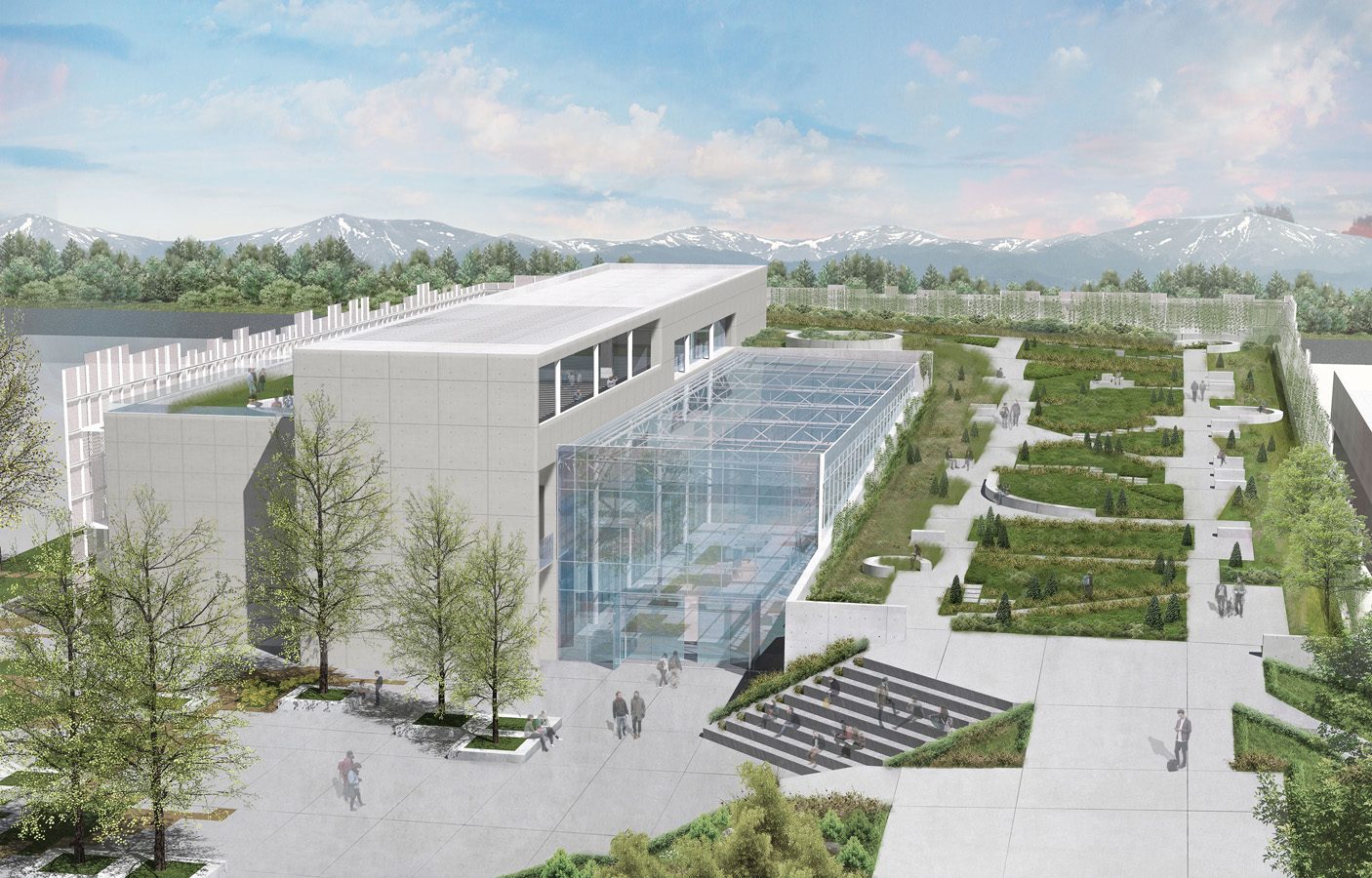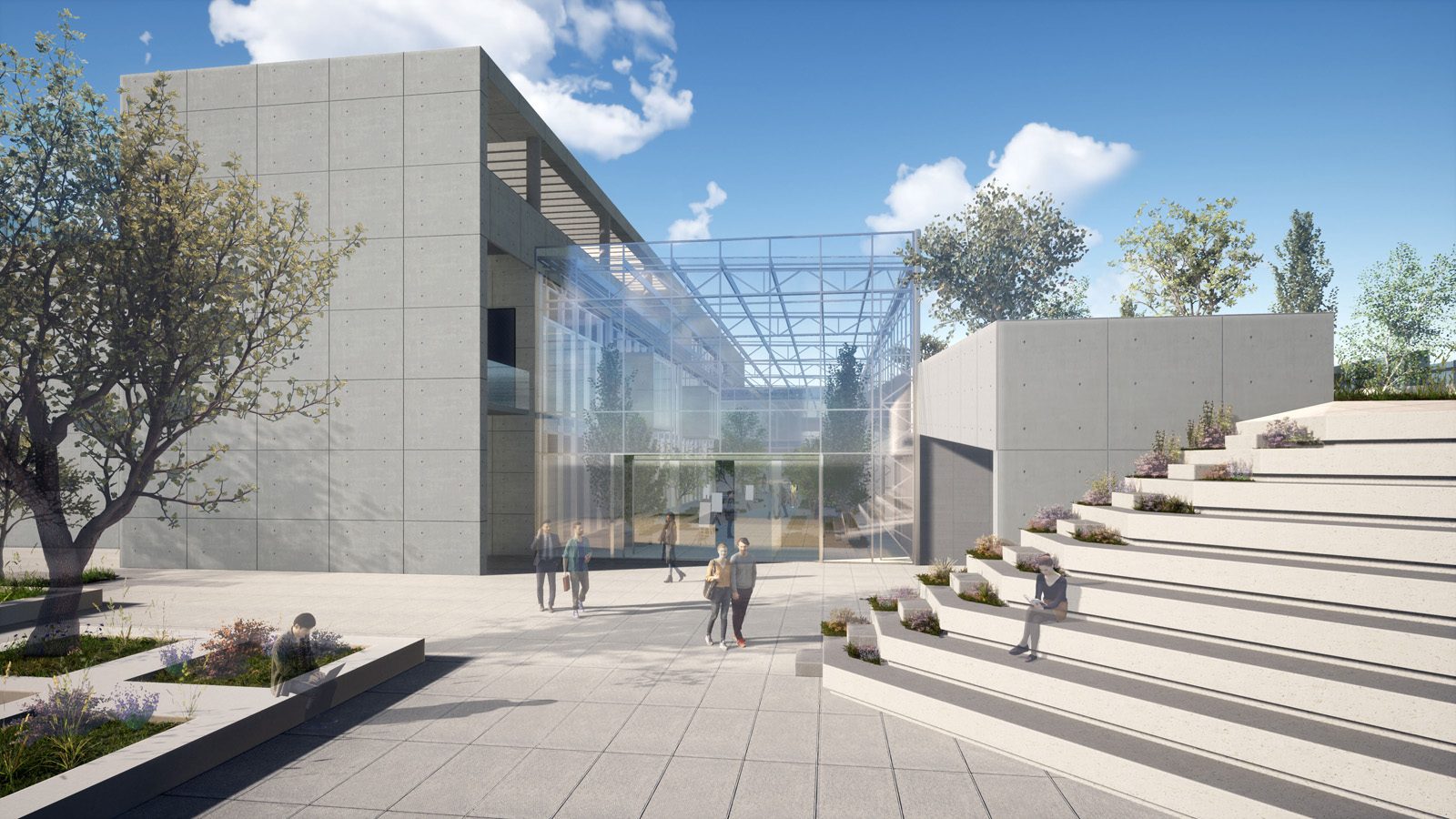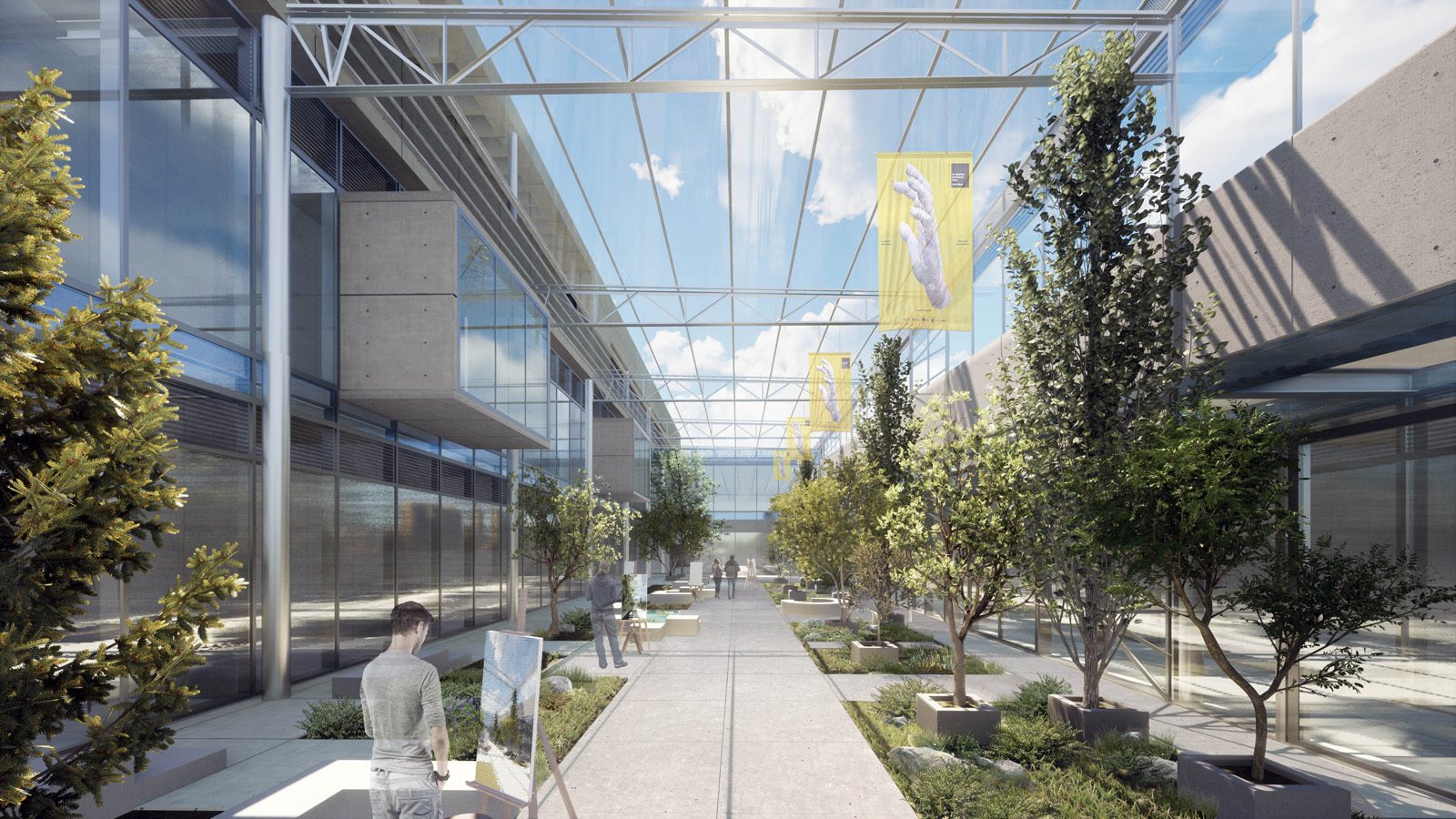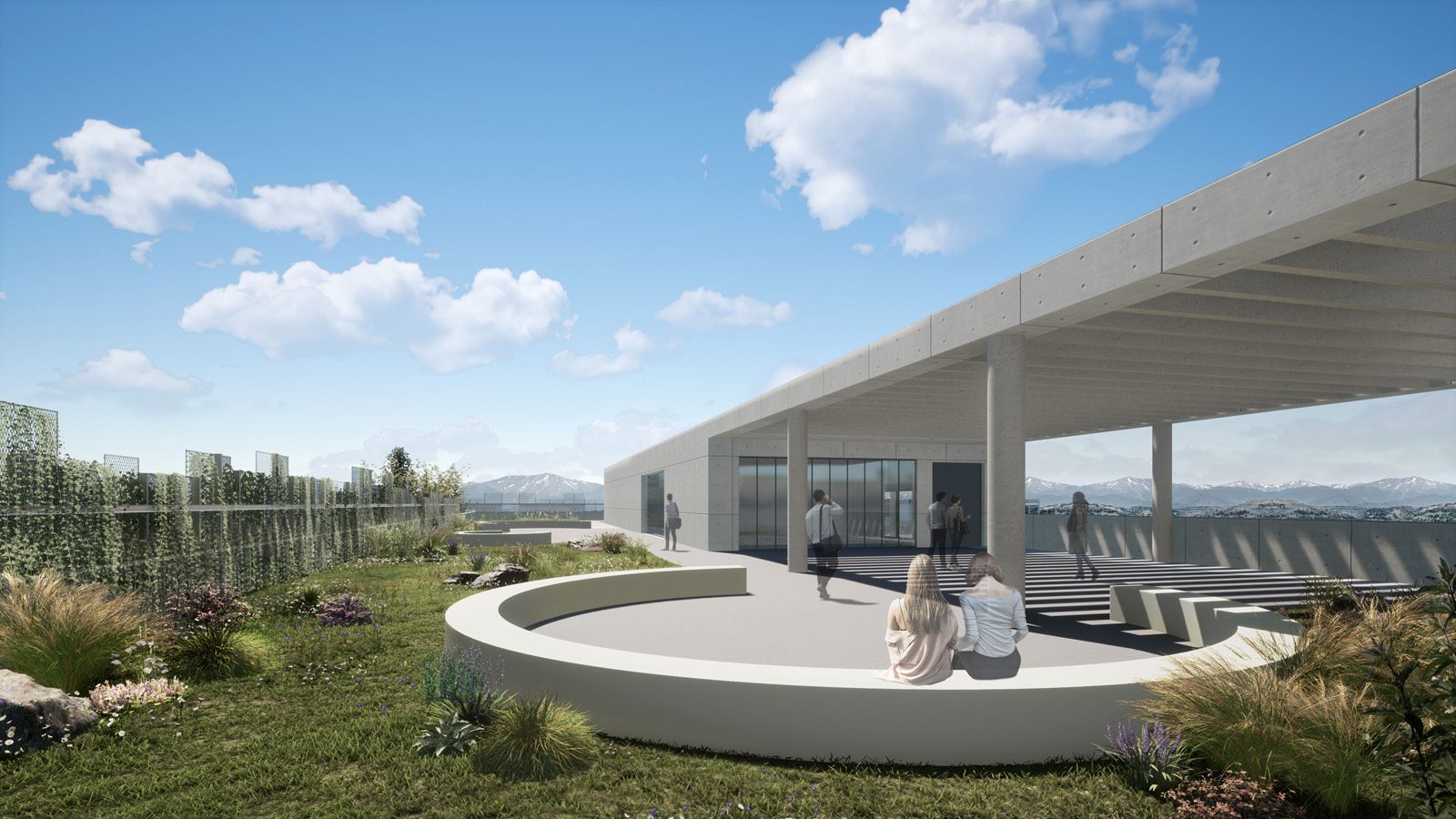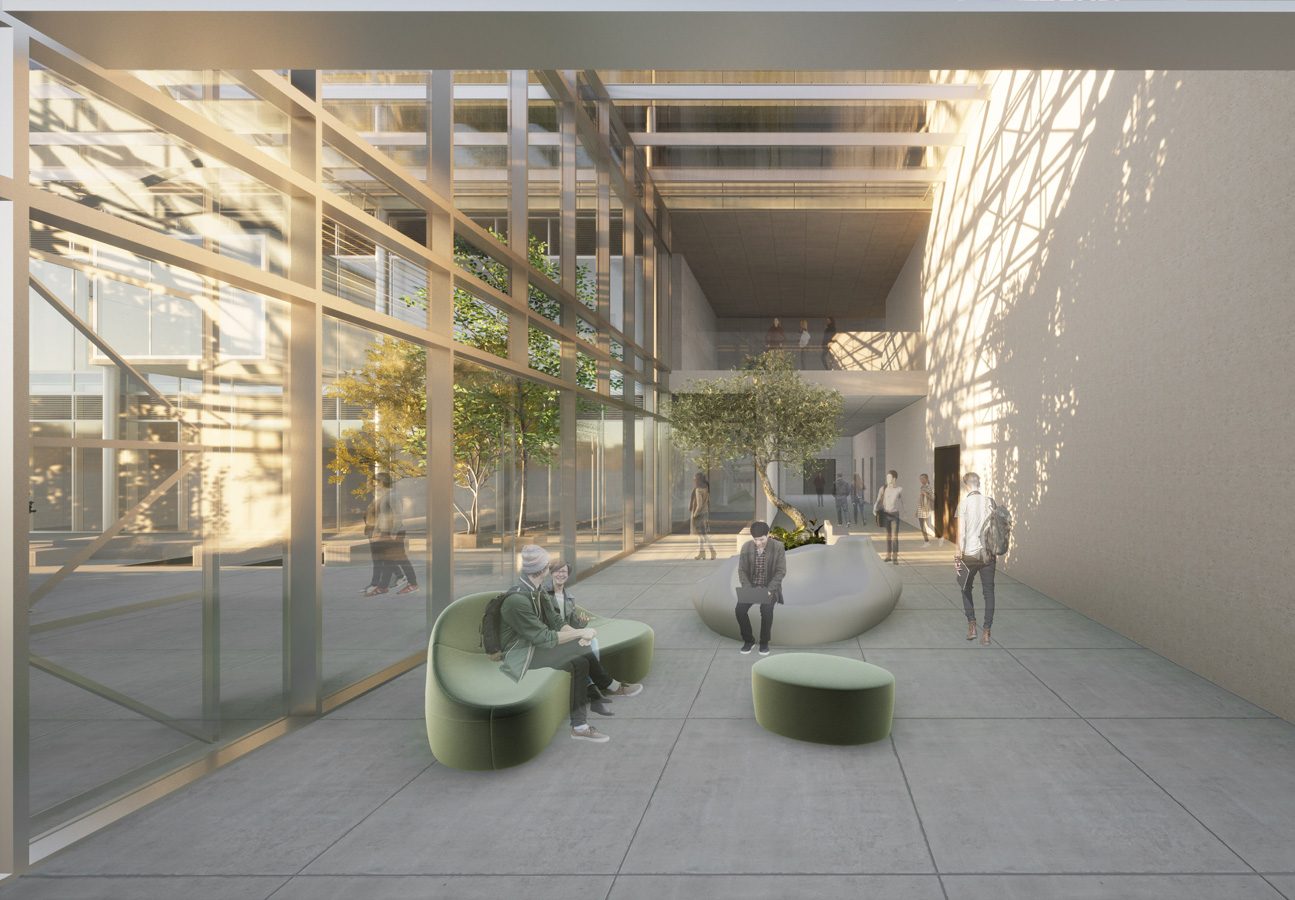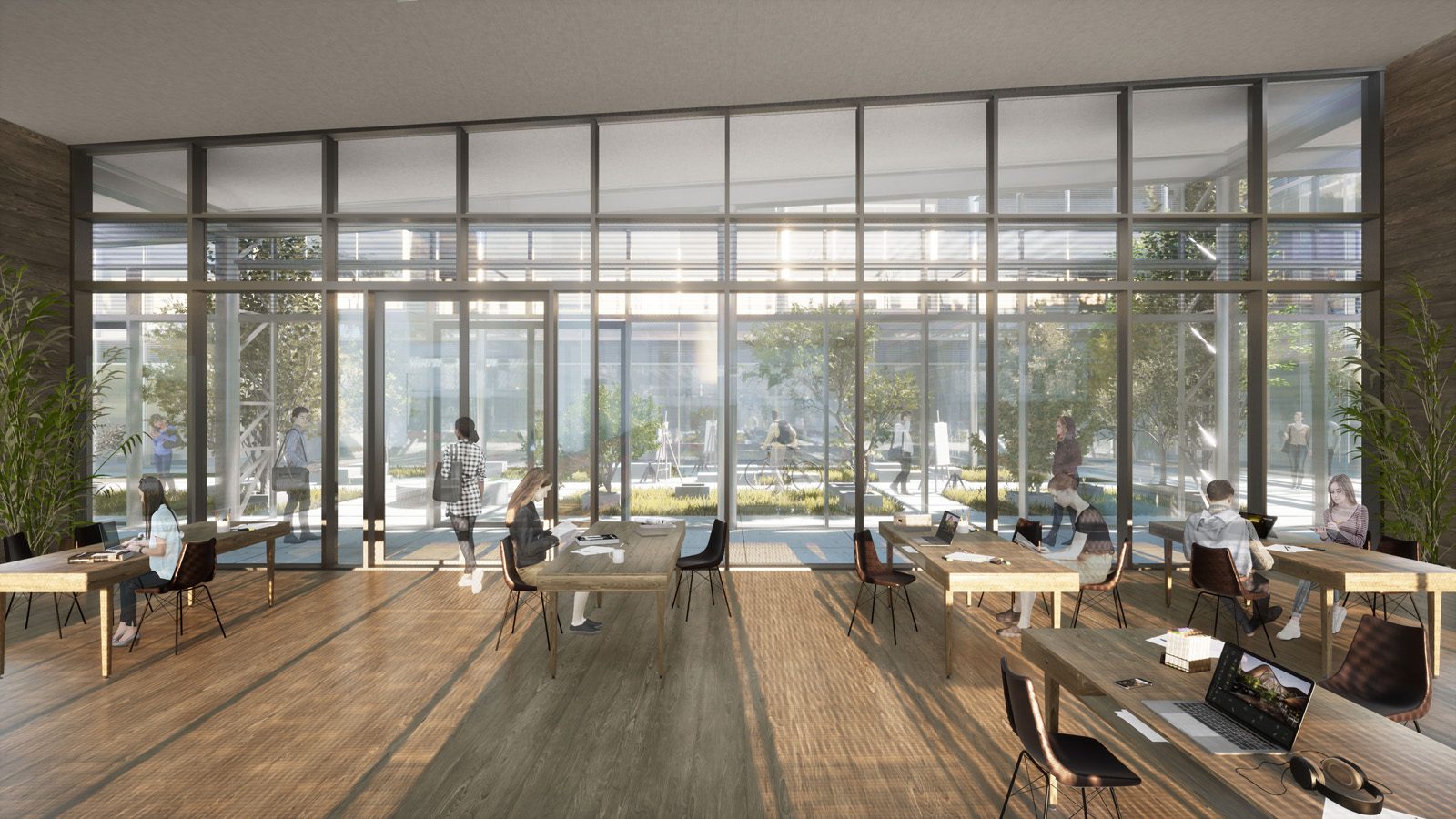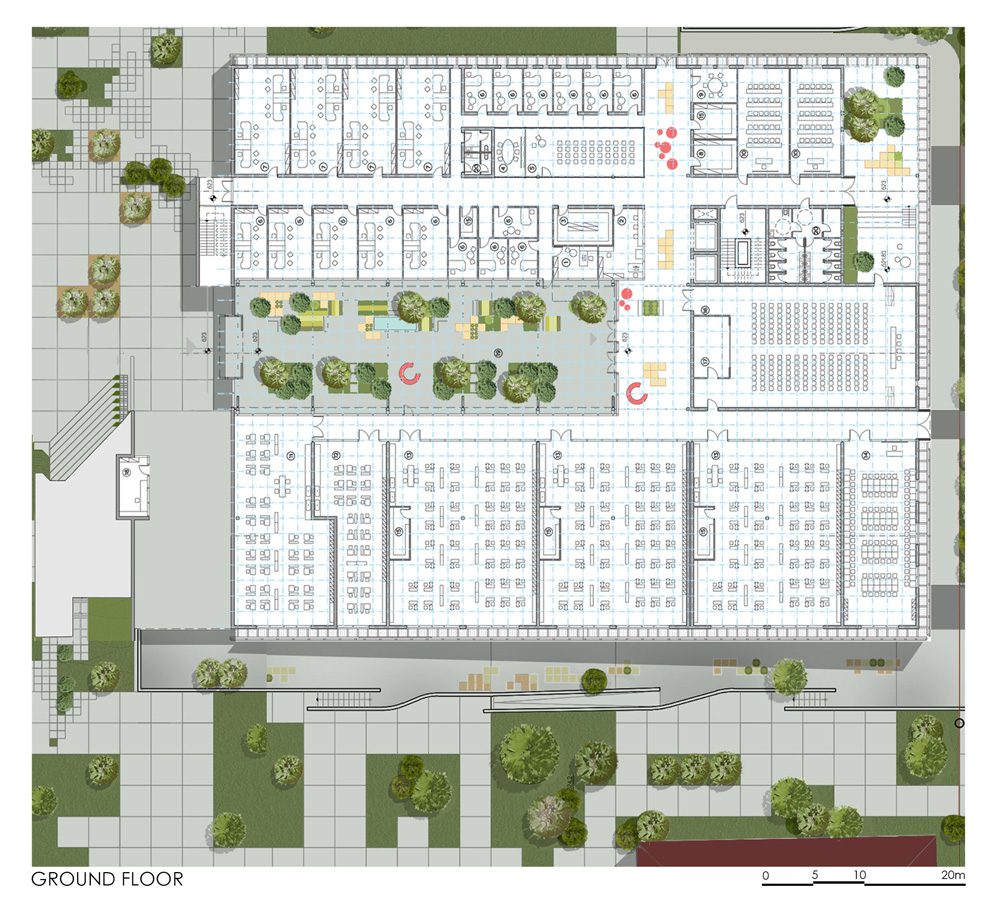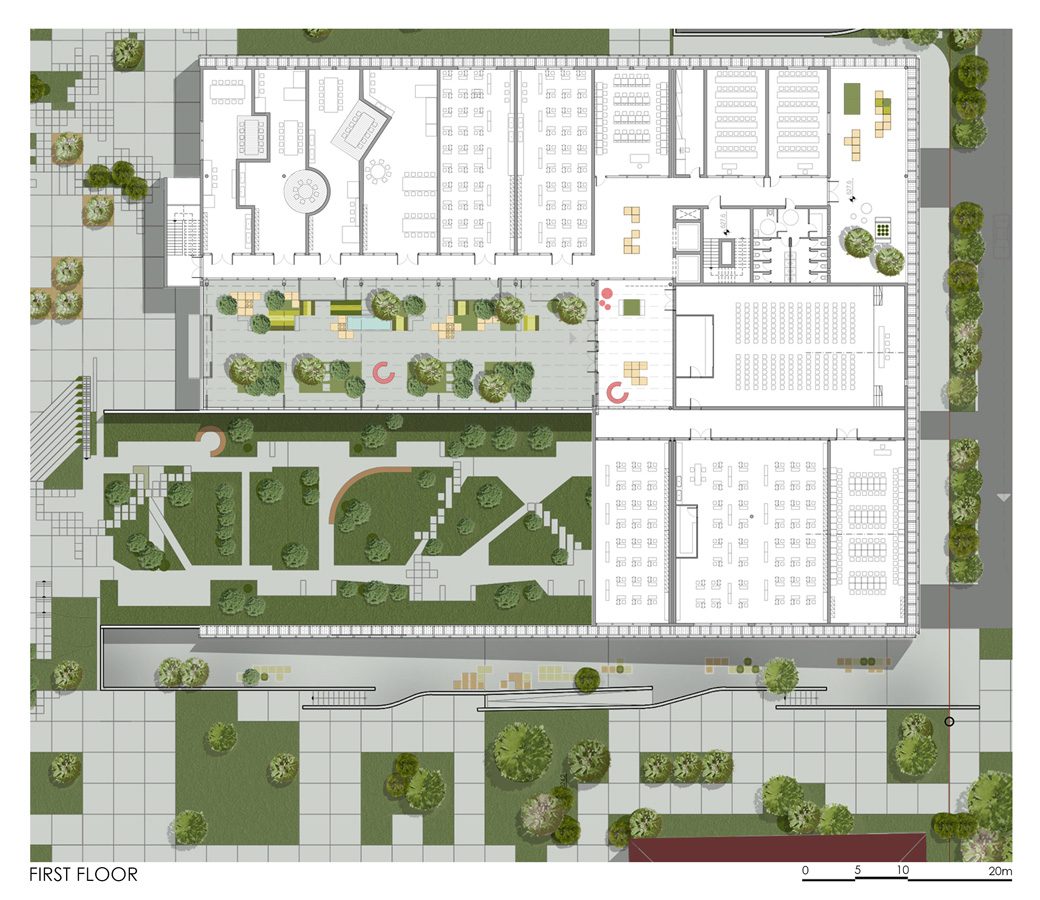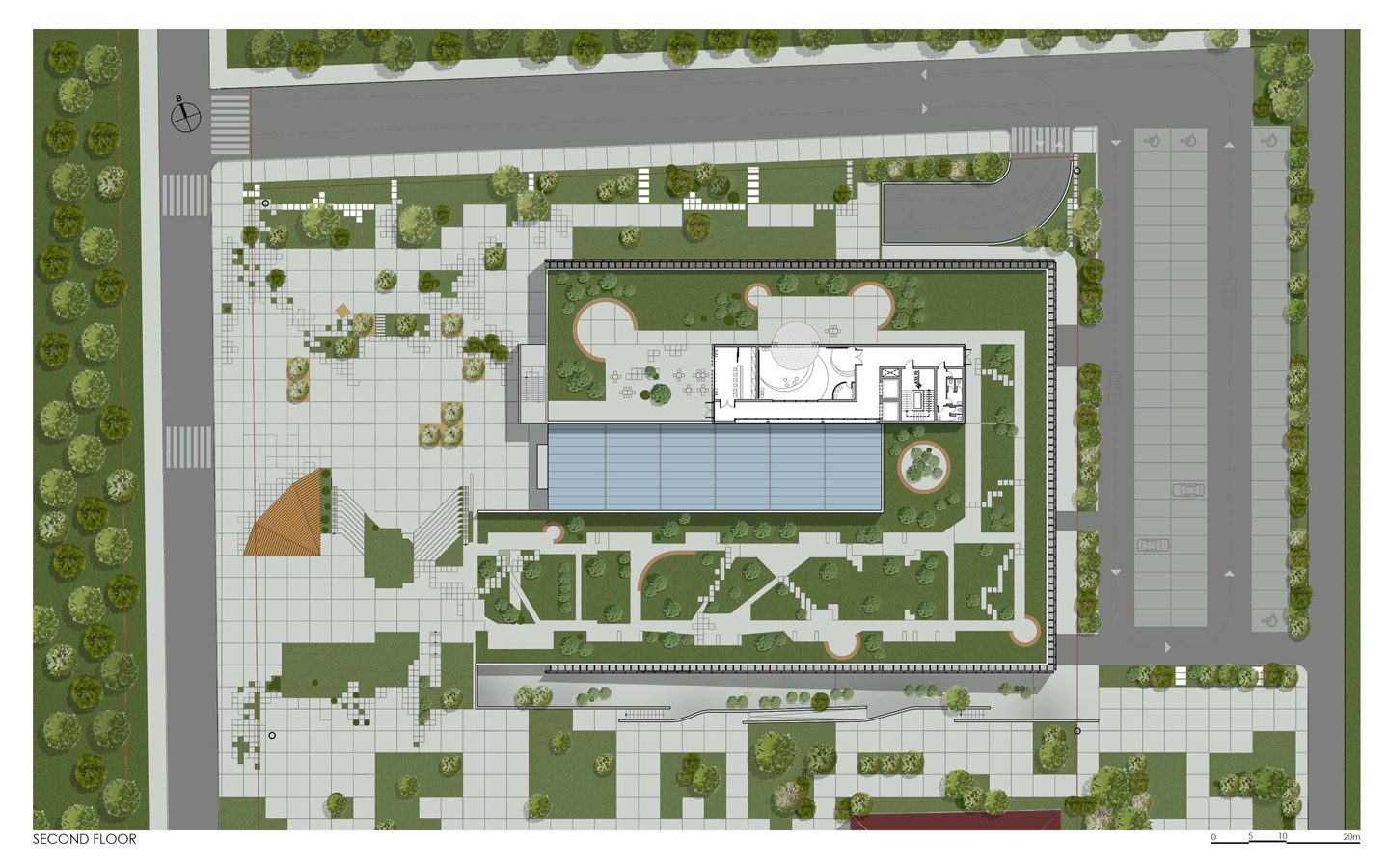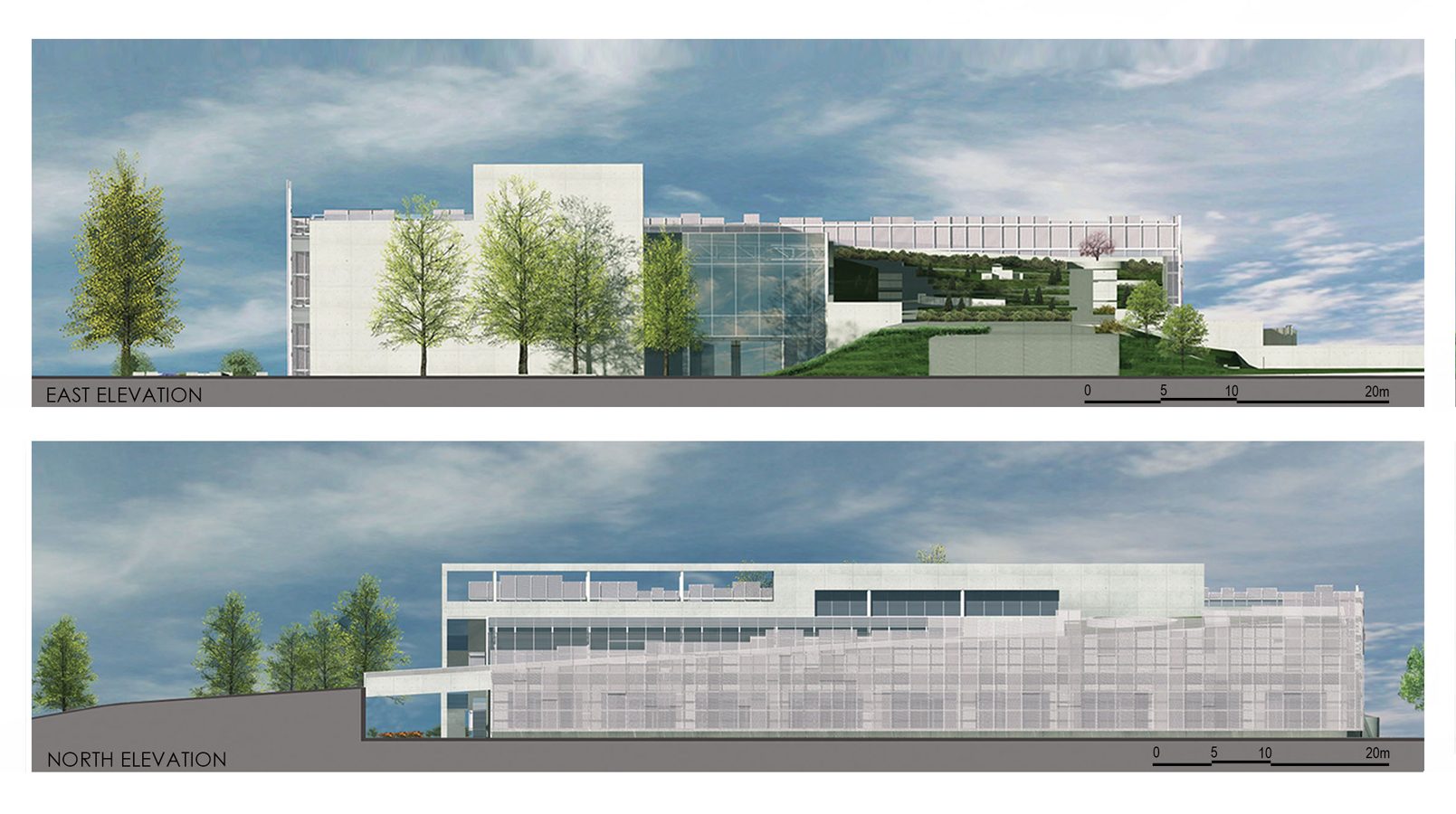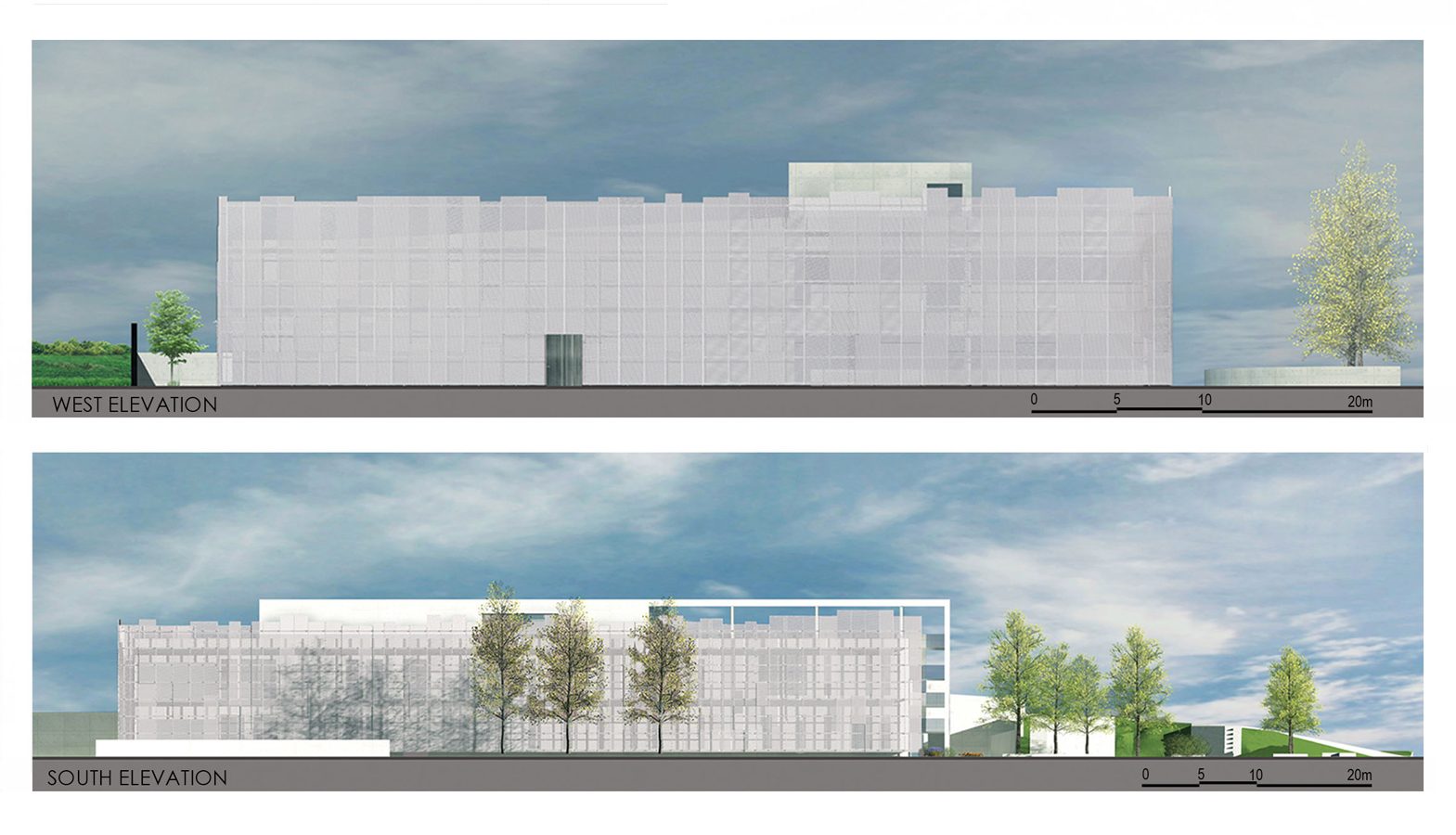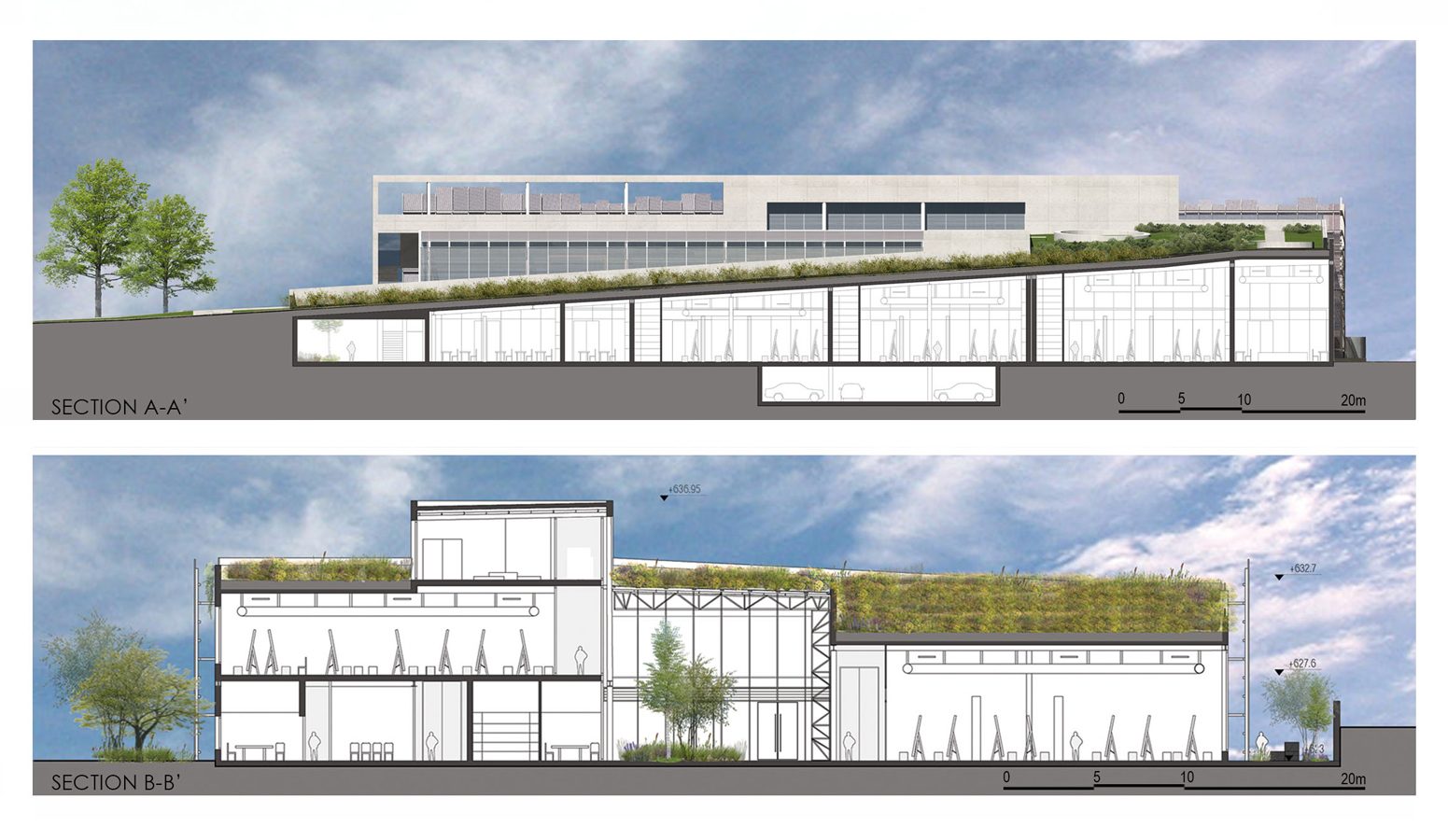School of Fine Arts: A kiss to Nature
location: Florina, Greece | bua: 5.100m² | design: 2020
designed by V. Baskozos architects & associates
design team: V. Baskozos, A. Fotopoulou, A. Giotakou, A. Spanos, N. Baskozos, N. Hatzistamoulos, Z. Kallianou, K. Ouzouni
The project was originally designed as a proposal in the architectural competition for the new building complex of School of Fine Arts in the University of Western Macedonia, in Florina.
The new building complex is located in Florina, a small town in the mountainous area of northwest Greece. The unexceptional environmental surroundings do not match with the school’s function and activities, since the students need an inspiring and pleasurable environment to create, live and interact. Also, because of the extreme climate conditions in the region, such as low temperature, snow and chilly northern winds, the need for a sustainable and environmentally friendly building is undeniable. Bearing this in mind, our efforts focused on reducing the negative environmental impact, gaining energy, improving air and water quality and utilizing the natural elements. Our main goal was to reconnect people with nature through architecture, by creating a new topography in the existing natural landscape. Natural elements are implemented in the design to create an aesthetically pleasing environment, and also to provide enhanced comfort conditions (air temperature and flow, shadiness, thermal comfort).
Structural limits are placed to regulate degrees of privacy, to provide shelter from the rain, sun and wind, and block the adjacent nuisances. The outdoor spaces are clearly defined and emphasized by their boundaries, in order to remain unaffected by neighboring conditions while allowing specific scopes of view of the surroundings. The simple geometry and hardness of the materials were intentionally selected with this in mind. The result is a structure that unites light, design, landscape and climate into a specific atmosphere that directly addresses the senses, embraces and enhances the inspiration and creativity of the residents.
The floor plan is developed in a Π shaped layout, around a solar atrium. Classrooms, workshops, offices, performance, recreational and storage spaces along with leisure areas are arranged behind operable glass walls, to provide cooling and heating benefits, filter the light and orient to specific views. In addition to the advantages of the solar atrium, it serves as a common space for exhibitions, meetings and relaxation.
Aligned to the building’s shape, there is a route that begins at the existing level and leads to the roof of the building. The continuous planted area leads to the green roof, a cafeteria and a performance space. The accessible green roof offers an aesthetic upgrade to the surroundings, but also protects the building and its structural materials from solar radiation, UV radiation, mechanical stress and weather conditions. Moreover, the planted roof collects rainwater, increases the amount of evaporation, reduces the energy consumption required for cooling and heating and provides fire protection.
Basic principles / strategies of design
- Elements of nature incorporated in the design
- The planted roof, the solar atrium, the wastewater system and the geothermal system provide energy autonomy and sustainability with the least possible energy footprint
- Rational and flexible functionality of indoor and outdoor spaces
- Use of contemporary, durable and not necessarily expensive building materials
- Full accessibility and facilities for people with disabilities.
The critical challenge, in conceptualizing an architectural composition, is to define boundaries and spaces, decipher the levels of privacy and mark the beginning and end of a function. The environment, the climate and the landscape are basic parameters in the conceptual procedure, interacting and intervening with the building limits in order to determine indoor and outdoor spaces and shape the structural volumes.
